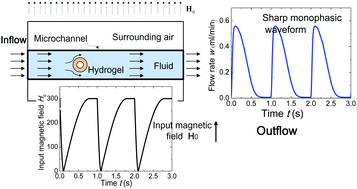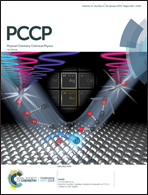Modeling of a fast-response magnetic-sensitive hydrogel for dynamic control of microfluidic flow
Abstract
A magnetic-sensitive hydrogel-based microfluidic system is designed via a magneto-chemo-hydro-mechanical model for replicating various physiological and pathological conditions in the human body, by which the desired flow patterns can be generated in real time due to the fast-response deformation of the magnetic hydrogel. In the model, the fluid–structure interaction is characterized between the deformable magnetic hydrogel and surrounding fluid flow through the fully coupled arbitrary Lagrangian–Eulerian (ALE) method. Moreover, the physicochemical mechanisms including hydrogel magnetization, fluid diffusion, fluid flow, and hydrogel large deformation are characterized. After validation of the present model with both the finite difference and experimental results in the open literature, the transient behavior of the magnetic hydrogel is investigated, and the results show that the response time for the magnetic hydrogel is improved significantly in a uniform magnetic field compared with that of a hydrogel without the magnetic effect. Furthermore, various patterns of pulsatile flow are generated for mimicking the cell physiological microenvironment experienced by bone marrow stromal cells, and also for the pathological condition at the femoral artery during diastole and systole, respectively. Therefore, the present magnetic-sensitive hydrogel-based microfluidic system via the multiphysics model may provide a relevant humanized manipulation platform to investigate cell behavior and function through microfluidic chips.



 Please wait while we load your content...
Please wait while we load your content...